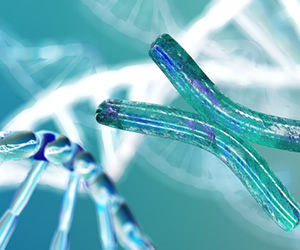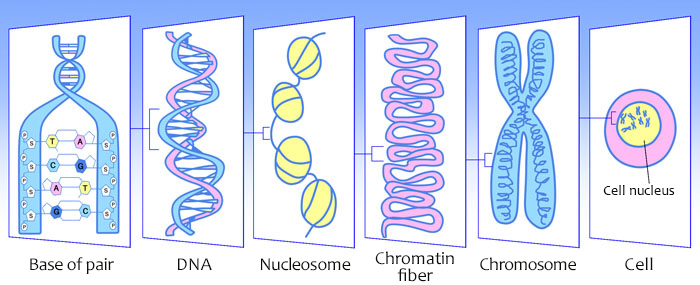Nucleic Acid
Nucleic Acid (DNA/RNA): Thinking of Health on the Genetic Level
DNA (deoxyribonucleic acid) and RNA (ribonucleic acid) are two types of nucleic acids that play distinct roles in sustaining life. DNA is located in the nucleus of a cell and contains genetic instructions or "blueprints" passed down from one generation to the next. RNA copies these genetic instructions from DNA and uses them to create proteins, which are essential for the formation of life. Nucleic acid is the basis for the fundamental functions of life, and it is present in each of the estimated 37 trillion cells that make up our body. The nutritional aspects of nucleic acid have been demonstrated and are also gaining widespread attention.

“DNA”: Encoding Genetic Instructions
DNA is a molecule that carries genetic instructions from generation to generation. It is present in the nucleus of about 37 trillion cells in our body. The typical size of the nucleus is between 0.005mm and 0.008mm. The nucleus is full of DNA strands that are approximately 2 meters long.
As depicted in the figure, the double-helix structure of DNA binds nucleotides together. Nucleotides comprise four nitrogenous bases that provide detailed instructions to produce protein in sequences. These sequences, in turn, determine our entire genetic makeup.
DNA is a human genetic material wrapped around a small, thread-like protein called histones. Each DNA strand forms a chromosome, and humans have 23 pairs of maternal and paternal chromosomes, which include 22 autosomes and one sex chromosome. The two sex chromosomes are X and Y chromosomes; a pair of X chromosomes biologically indicates the female sex, while a pair of X and Y chromosomes indicates the male sex.
Human DNA exists as chromosomes and has up to 3 billion sequences, accounting for approximately 2% of the total DNA. The remaining sections, called non-coding DNA, were once considered junk DNA. However, recent studies have shown that these sections control gene expression and are essential for life processes.
Genes are in fixed positions on chromosomes, and research through the Human Genome Project (HGP) has mapped out specific genes throughout the chromosome, leading to the creation of the human genome map. The new research called "Post-Human Genome Project" utilizes the Human Genome Project as a basis for current research.

Self-Replication
A cell is the smallest unit in living organisms. Every life cycle relies entirely on cell division. Throughout this process, DNA replication is essential for genetic information to be transmitted from each parent cell to daughter cell. A significant amount of nucleotides are required for DNA replication. Nucleotides are synthesized in the body using two pathways, large amounts of nucleotides are pooled in the nucleus, as we age, it has been reported that the amount of nucleotides necessary for nucleotide synthesis will decrease. Correlations in nucleotide reduction and aging have also been proposed.
For three billion base sequences to replicate correctly, our body has a “DNA repair mechanism” that correct erroneous genome sequences at the time of replication to repair DNA damage due to oxidative stress and other factors. When there is an error in a genetic sequence, the capacity to make the correct proteins may deteriorate.
The Involvement of RNA in Protein Synthesis
RNA plays a crucial role in protein synthesis by binding amino acids copied from the instructions of DNA. Like DNA, RNA is composed of nucleotides and contains nitrogenous bases such as adenine (A), guanine (G), and cytosine (C). However, uracil (U) replaces DNA's nitrogenous base thymine (T) in RNA. RNA has a different overall structure from DNA; it is single-stranded, while DNA is double-stranded.
Three main types of RNA play a crucial role in protein synthesis: messenger RNA (mRNA), transfer RNA (tRNA), and ribosomal RNA (rRNA). These types of RNA work collectively with DNA in protein synthesis. The human body can produce up to 100,000 different types of proteins, which depend on consuming amino acids. Approximately 20 kinds of amino acids create various proteins. When RNA copies the genetic segments from DNA, they correspond with codons, sequences of three nucleotides representing one amino acid. This process helps create protein chains.
Protein synthesis occurs in two main steps:
1. Transcription: Necessary sections of the two strands of the DNA helix are separated to make protein, and then they are copied to the mRNA.
2. Translation: Based on the instructions copied to the mRNA, tRNA collects the necessary amino acids and carries them to the ribosome, where they are linked to synthesize the essential proteins.

Control of Gene Expression
Our body comprises around 37 trillion cells, each with a unique shape, size, and function. The nucleus of every cell carries all the information about our genetic structure. Due to variations in genetic combinations, each cell has different functions. The mRNA synthesizes proteins based on genetic instructions, gene expression, and other functions. The body regularly adjusts to maintain a proper state in response to changes in external environments and other factors. Various mechanisms control gene expression differently and individually.
Most control in gene expression occurs during transcription. In recent years, the discovery of miRNA (microRNA) and siRNA (short interfering RNA) has demonstrated posttranscriptional control of gene expression among RNA not involved in protein synthesis. Since decoding the human genome, discovering a new and essential function of RNA regulating gene expression has gained widespread attention.
- TOP >
- Nucleic Acid